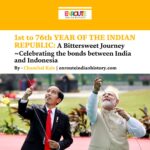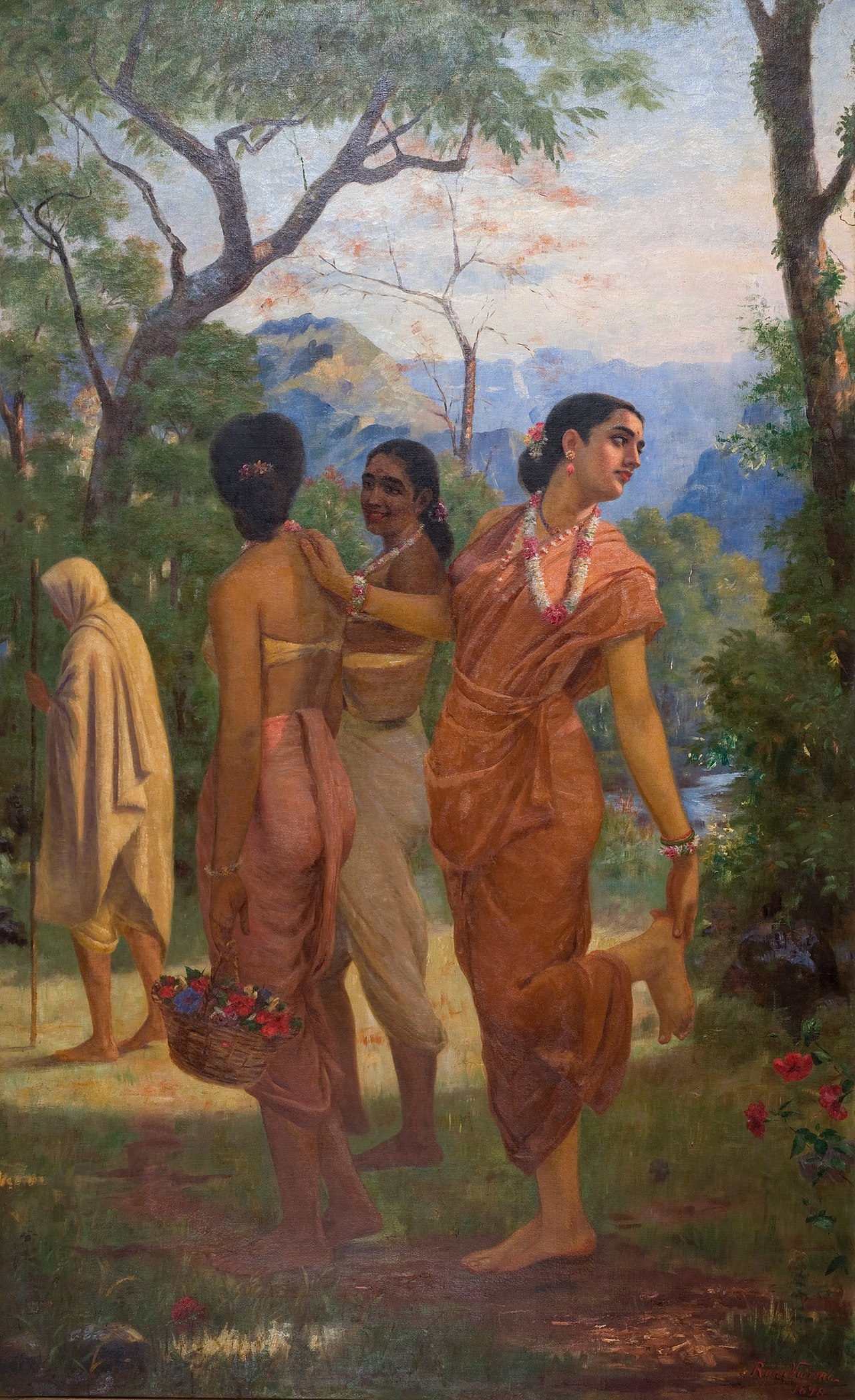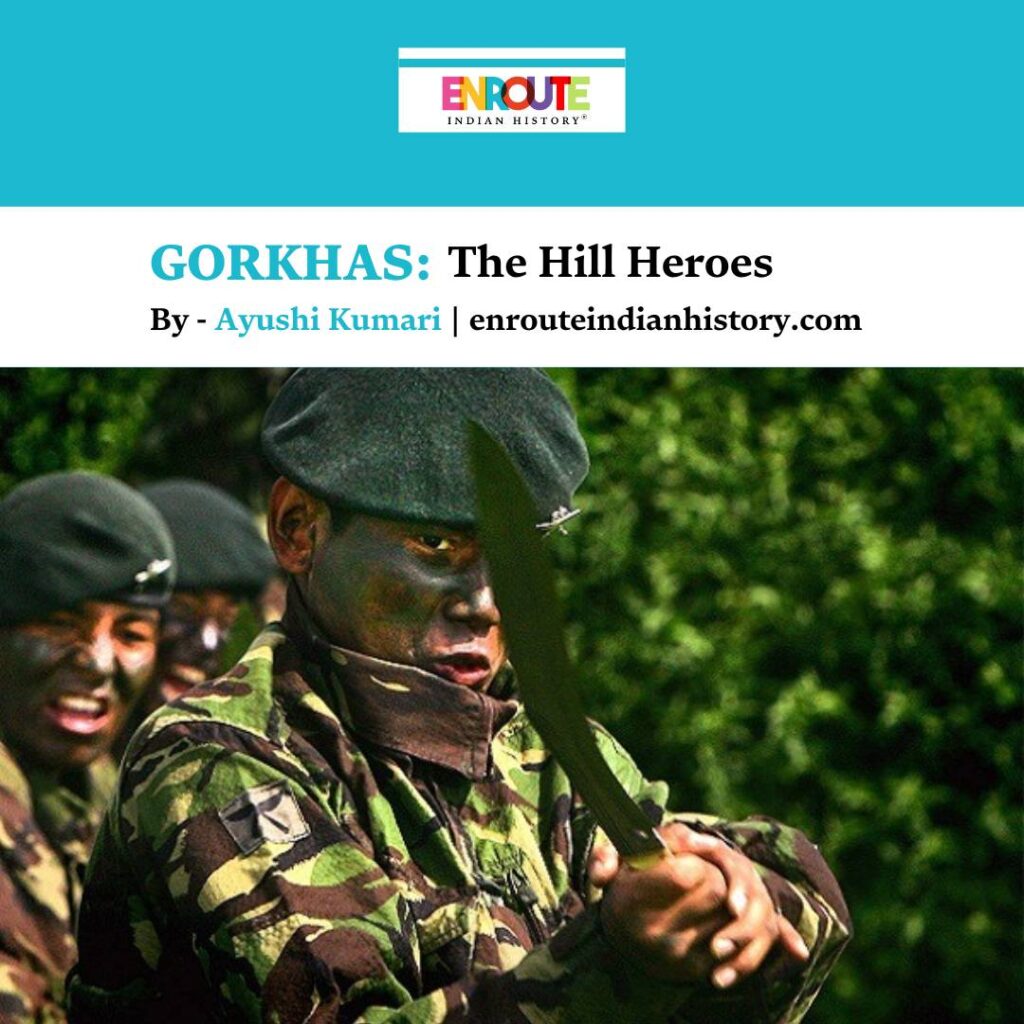
Gorkhas – The Hill Heroes
Article By – Ayushi kumari
Gorkhas are said to be the personification of bravery and courage. In their two hundred years of existence as a fighting force, their valour and loyalty is a story that every serviceman knows about. Whether it was WWI, WWII or any other peacekeeping movement, Gorkhas were always on the forefront fighting bravely making the word gallantry a well suited adverb for their phenomenal service. Today serving in the Armies of different nations like India, UK, Singapore and Brunei, Gorkhas have earned their name in the defence sector raising speculations regarding the veracity of the martial race theory postulated by British officers. Throughout this article, the history of Gorkhas will be traced with a special focus on their lives in India before and after independence along with taking a bird’s view of the situation of Gorkhas in their own nation- Nepal
Gorkha Regiment of the Indian army is a special regiment that was given the honour of leading the Chief guest of India’s first republic day celebration which was held in 1950. This, in itself, shows how much this regiment is revered. In reality the term ‘gurkha’ is a corrupted term of ‘gorkha’ which is today used to refer to the recruits from the hilly tracts of nepal. Historically speaking, ‘gurkha’ were the part of ‘Gorkhali force’ of the Nepali ruler Prithvi Narayan Shah who was credited to expand Nepal’s boundaries to a great extent. A stable kingdom came into existence with Kangra in the west (Himachal Pradesh) and Tista river in the east( Sikkim) forming its natural boundaries. Based on the system of jagirs, Gorkha soldiers used to get their service pay in the form of land grants from the lands which were handed over to them by the rulers. Dependency on a highly land based system like this created the need for more land to be acquired and thus Nepal durbar soon collided with British colonists in India. British forces in India were on their peak of expansion during this time. After the battle of plassey, they needed to assure their hold in North India and the expansionist policies of Prithvi Narayan Shah raised suspicions in the minds of the British leading to the beginning of Anglo Nepalese war.
In 1767, the Gorkhas and british fought for the first time. East India Company sent its 2400 soldiers to assist the Newari king of Kathmandu in resisting the gorkha attack. Led by officer Kinloch, the British faced a humiliating defeat with less than 1000 returning back to India and this incident became infamous as the ‘ Kinloch expedition’.
Nepal durbar prevented any further entanglements with the British and finally in 1801 a treaty was signed between both the parties allowing the establishment of British residency in Kathmandu. After negotiations with exiled Raja Ran Bahadur Shah in Benaras, Captain Knox was sent as the first British resident in 1802 but he returned just after fourteen months because of the lack of cooperation from Nepal’s side and the treaty was finally dissolved in 1804.
Authors like Tim Gurung in his book ‘Ayo Gurkhali’ explains that many historians believe that the greed of Gurkhas for more fertile land brought them in loggerheads with the British.Gurkhas did not want to annex Bhutan due to lack of resources. Capturing north west of India was almost impossible due to Sikh control. Only northern india was open for them due to weak local control.It was the Gorkhali Army’s attack on a police station and the killing of police officers on the Indian side of Butwal that made Lord Moira, then Governor-General of Bengal, declare war on Nepal on 1 November 1814. With famous battles like that of Nalapani fort where Balbhadra Kunwor with 600 Gorkhas held on against the attack of General Gillesepe for over a month. Ultimately Gillesepe died and it was only General Ochterlony against Amar Singh Thapa whose expedition succeeded. On 15th May 1815, Treaty of Sugauli was signed which mentioned that all the Gorkhas had to evacuate all their forts from Jaithak (near Sirmour in Himachal) to the west of the River Yamuna. All the Gurkhas were allowed to take their belongings to Nepal, and General Amar Singh Thapa, his relations and officers were allowed to go to Nepal in safety with their weapons and belongings. Nowhere in the treaty has there been a mention of recruitment of Gorkha into the British army and it is said that this was a secret agreement between Amar Singh Thapa and Ochterlony. Consequently, from 1815 onwards, Gorkhas started getting recruited into the British army on a voluntary basis and were not made permanent till very late. Gorkhas use the word ‘Lahure’ to talk about themselves. This word comes from the word ‘Lahore’ signifying the recruitment of Gorkhas into the Sikh forces of Maharaja Ranjit Singh much before their entry into the British army. Balbhadra Kunwor, the hero of Nalapani, also joined Maharaja Ranjit Singh’s forces later on and died while serving him.
Why Gorkhas were chosen to be a part of the British army is another question. During this time, upper caste Bengal sepoys started questioning british officers and thus british needed a more trustable force in their army.Officers like Hodgson started explaining the perks of having Gorkhas in the army showing how courageous and loyal they were in comparison to the indian sepoys. Brian Hodgson wrote –
‘The Company’s Indian Sepoys must bathe from head to toe, make puja (pray), and they begin to dress for their dinner. They eat nearly naked only with a ritual dhoti in the coldest weather and thus take three hours over a meal. The Gurkhas, on the other hand, laugh at all this pharisaical rigour and dispatch their meal in half an hour.’
Martial race theory boosted all these beliefs. According to the martial race theory, some races were naturally very powerful and courageous. Especially those who lived up in the hills like the Gorkhas were no less than an epitome of valour. Supported by these beliefs, by 1815, three gorkha regiments were formed in India and this number kept on increasing. While talking about Gorkhas, one thing should be made clear that the Indian military accepts Gorkhas from both India and nepal. This recruitment follows the fixed percentage of 60 % nepalese Gorkhas ( gorkha from nepal) and 40 % Indian Gorkhas (Nepali people in areas like Sikkim).In the initial days of recruitment, british used to follow a strict policy of recruiting only Magar, Gurung, Rai and Limbus. This was backed by their reason of hilly Gorkhas being the real martial Gorkhas while those living in non hilly regions of Nepal like that of Eastern Nepal were not suitable for recruitment. This started a policy of discrimination in the British army however later people from all the castes started getting recruited. Gorkha forces remained the most loyal to the British with their indomitable fight in the Anglo sikh war of 1845-46 and the revolt of 1857. WWI and WWII made Gorkhas world famous. Myths were created about the kukri knife of Gorkhas. Kukri or khukuri is actually a multi purpose tool and was used by the gorkha farmers. Initially gorkha were farmers and even today many continue the same profession. It was the British intrusion that converted them into stern soldiers and today this military roar has become their way of life. Nevertheless, kukri is actually a utility tool and is considered to be a symbol of prestige and power. Every Gorkha house has a kukri though it might not be their main weapon like in the case of Gurungs. The blade of kukri is made from single high-grade steel and the handle is of either hardwood, metal or animal’s horn. Every Gorkha soldier carries a kukri with himself and all the symbols associated with Gorkhas have a kukri blade as a prerequisite. Spiritually, Gorkhas believe that the curved blade of kukri symbolises the Hindu Trinity (Brahma, Vishnu, Shiva) and the notch at the edge symbolises Om.
During both the world wars, a myth was created that once a gorkha unleashes his kukri knife, it cannot be leashed without killing someone. It is destined to spill blood. This used to create fear in the minds of enemies making them lose the mental battle before the actual battle.
The time of world war was considered to be the toughest for gorkha families as they could never be sure of their families returning safe and sound. Gorkha women used to work in the farms raising their families alone. Many times, Gorkhas used to die and their families were not even informed.
After India’s Independence in 1947, a tripartite agreement was signed between Nepal, India and Britain regarding the future of Gorkha regiments of India. Altogether there were ten regiments in India. Under the tripartite agreement, Britain took control over four of these regiments namely 2nd, 6th, 7th and 10th regiment. The Remaining six regiments remained with india. Some battalions of the aforementioned British taken regiments wanted to be a part of the Indian army and thus the 11th Gorkha regiment was created.Along with this division, it was made clear that gorkha soldiers would be paid equivalent to the soldiers of the countries where they are recruited.
With this agreement began a system of social differentiation in Nepal. British Gorkhas were recruited in Hong Kong and Singapore and eventually got paid in their currencies which held more value in Nepal. There was very little difference between Indian and Nepali rupees thus negating the changes of greater currency valuation. Because of this reason, a clear distinction could be seen between the British Gorkhas called Malayan Gorkhas/Lahure and the Indian Gorkhas or Indiako Lahure. An Indiako gorkha would come back with one suitcase maximum but a Malayan gorkha would come back with loads of gifts. All this resulted in the preference of Malayan Gorkhas over Indiako Gorkhas for marriage and thus all the Nepalese youth would first try to get into the British army and in case they failed, they would try to enter the Indian army. This was the situation in the early years of independence. Many Gorkhas still favored India because of its proximity with Nepal and lenient policies regarding family stay in comparison to that of Britain. After lots of justice campaigns led by institutions like Gurkha Army Ex-servicemen’s Organisation (GAESO), House of Commons in Britain finally passed a law in 2009 allowing the families of Gorkha with more than four years of Serve to Britain and dischargement before 1 July, 1997 to stay in Britain.
Since independence, following regiments have been formed in India and all these regiments have their own stories.
| REGIMENT | ESTABLISHED IN | BASE | WARS FOUGHT AFTER INDEPENDENCE |
| 1st Gorkha Rifles
(Malaun Regiment) Oldest regiment |
1815 | Subathu, Himachal Pradesh | Indo pakistan war 1965, Indo pakistan war 1971 and peacekeeping missions |
| 3rd Gorkha Rifles | 1815 | Varanasi, Uttar Pradesh | Famous for the storming of the Dargai Heights in 1897, Kashmir war of 1947-48, indo-pak war (1971) |
| 4th Gorkha Rifles | 1857 | Subathu, Himachal Pradesh | Kashmir war (1947-48), siachen glacier and Punjab (1965), Jammu Kashmir (1971)
|
| 5th Gorkha Rifles
Also called ‘Frontier Force’ |
1858 | Shillong, meghalaya | Won most victoria crosses among other regiments, second battalion deployed in japan as part of british occupation in 1946,Kashmir war (1947-48),Indo pakistan war 1965, sent to Sri Lanka for peacekeeping |
| 8th Gorkha Rifles
Also called ‘shiny eight’ |
1824 | Shillong | 1947-48 Kashmir war, Indo Pak wars, Sri Lankan peacekeeping force, Kargil war (1999)
Famous officers- Major Dhan Singh Thapa, Field Marshal Sam Manekshaw |
| 9th Gorkha Rifles
Recruits mainly from Chhetri and Thakuri clans |
1817 | Varanasi | Sino- india war of 1962, indo- pak wars |
| 11th Gorkha Rifles | 1948 | Lucknow, Uttar Pradesh | Sino- india war of 1962, indo- pak wars, kargil war of 1999 |
In recent years, the passing of Agnipath scheme has led to lots of problems in the recruitment of Gorkhas. Nepal supposedly stopped Gorkha recruitment into the Indian army because of fear of waves of unemployed Gorkhas coming back to Nepal in case they fail to get selected after four years. These militarily trained unemployed Gorkhas could become a part of maoist aggressions and thus increasing the chances of upheaval in Nepal. Scared of such situations, Nepal Government has stopped Gorkha recruitment since 2020.
Gorkhas have emerged as an inevitable part of the Indian army. No matter which country they work for, they remain true to their valour and fealty as is stated in the famous Nepali proverb ‘Jasko nun khanchau, usko bhalo sochnu’ which means to always think good of the hand that feeds you. Gorkha way of life deeply affected the culture of Nepal, especially its social arrangement. Folk Songs are the best reflection of this impact on the natives of nepal specifically the gorkha families who wait in agony for their husbands, sons, fathers and brothers to return.One example of such a folk song is given below-
Aama Basi Dharti Naroya Aama, Banche Pathaula Tasvirai Khichera,
Don’t sit on the ground and cry, my dear mother, I will send you a photo if I survive,
Baba Runchan Barsha Din, Aama Runchin Jindaji Bharilai Hajura,
Father will cry for a year, and mother will cry for a lifetime, my dear!
Hai Barai, amale sodhlin ni khwoi chhora bhanlin, ranhai khulyo bhandias
Mother will ask where is my son; tell her the war had just begun
Babale sodhlan ni khwoi chhora bhanlan, ranh jitdaichha bhandias
Father will ask where is my son; tell him I am winning the battle
Dajaile sodhlan ni khwoi bhai bhanlan, aunsai badhyo bhandias
Elder brother will ask where is my brother; tell him his share has increased
Didile shodlin ni khwoi bhai bhanlin, cholinai ghatyo bhandias
Elder sister will ask where is my brother; tell her the gift has decreased
Bahinile shodlin ni khwoi bhai bhanlin, maiti ghatyo bhandias
Younger sister will ask where is my brother; tell her you’ve one fewer brother now
Chhorale shodlan ni khwoi baba bhanlan, topi jhikei bhandias
Son will ask where is my father; tell him to take his cap off
Chhorile shodlin khwoi baba bhanlin, sunchurako daan diyas …
Daughter will ask where is my father; tell her to forget about the gold bangle
Priyale shodlin khwoi swami bhanlin, baatai khulyo bhandias
Wife will ask where is my husband; tell her the way is cleared
Bhaujyule shodlin ni khwoi dewar bhanlin, khasi kaat bhandias
Sister-in-law will ask where is my brother-in-law; tell her to celebrate at her will
Saathile shodlan khwoi lahure bhanlan, mayamaar bhandias
Friend will ask where is my lahure; tell him to forget about me
Songs like these and Resham Firiri are the soul of gorkha culture. Even in gorkha army battalions, evening dances and songs are considered very important. It would not be a surprise if a gorkha is found beating a Madal with other Gorkhas dancing and singing around them. Simple, Humble, Brave and Loyal – Gurkhas perfectly fit this description. Their call of ‘Jai Mahakali, Ayo Gorkhali’ resonates their bravery. No matter whether the martial theory was correct or false, Gorkhas are indeed great fighters. Their stories of bravery are many and one article is not enough to deal with all of them. Despite all these accolades, gorkha life cannot be perceived as just a life of glory. After retirement, Gorkhas face pension issues. At many places in Nepal, people see them as a source of shame. Scholarship program that the Indian government began to allow gorkha children to study is today hijacked by corrupt officers in nepal. World War veterans are hardly sustaining themselves. Only one Gorkha regiment of Britain is active today. Rest are all disbanded. Recruitment into the Indian army is also obstructed due to controversies related to the Agnipath scheme. In short, gorkha life is tough and a lot has to be done to ensure that this community is duly respected and gets enough support from their own governments as well as from the nations they are working for. Organisations like GAESO, British Gorkha Welfare Society, Gorkhali Sudhar Sabha etc are actively rallying for gorkha rights leading justice campaigns all over the world. However, it is the government support that is significantly lacking. Recognition accompanied without due care is non beneficial and this is exactly what is happening with Gorkhas ! Thus, with the combined efforts of individuals, organisations and governments; life of Gorkhas and their families can be changed significantly and this is what needs to be done today.
References–
- Tim Gurung’s Book – Ayo Gurkhali
- https://www.jstor.org/stable/44158426
- https://www.jstor.org/stable/44147727
- https://www.jstor.org/stable/pdf/312617.pdf
- https://youtu.be/NURkLa9BWcQ?si=AhBw36E_vv40jH3Y
- https://youtu.be/fnueIkrSrT8?si=2pDn0I7mFdiXo_sH
- https://youtu.be/26Wj-BsPZvg?si=wUMIrmzjS8QYnN8l
- https://youtu.be/cT-YSkVxcmU?si=EWzQUeVoYqLxL_cY
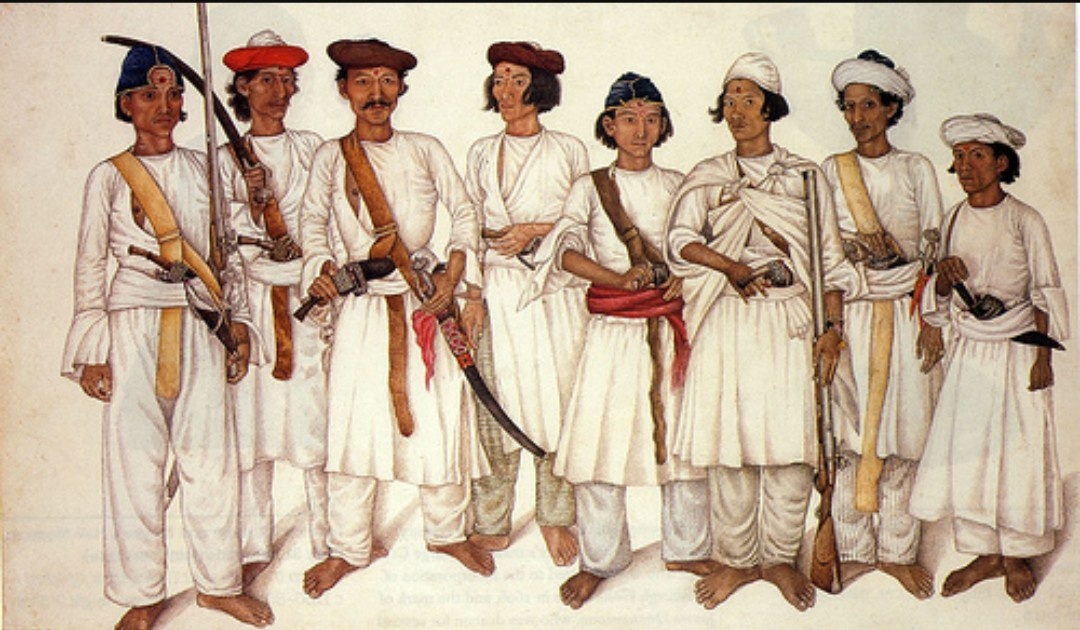
Fig. 1- Painting commissioned by William Fraser in 1815 depicting the lives of Gorkhas
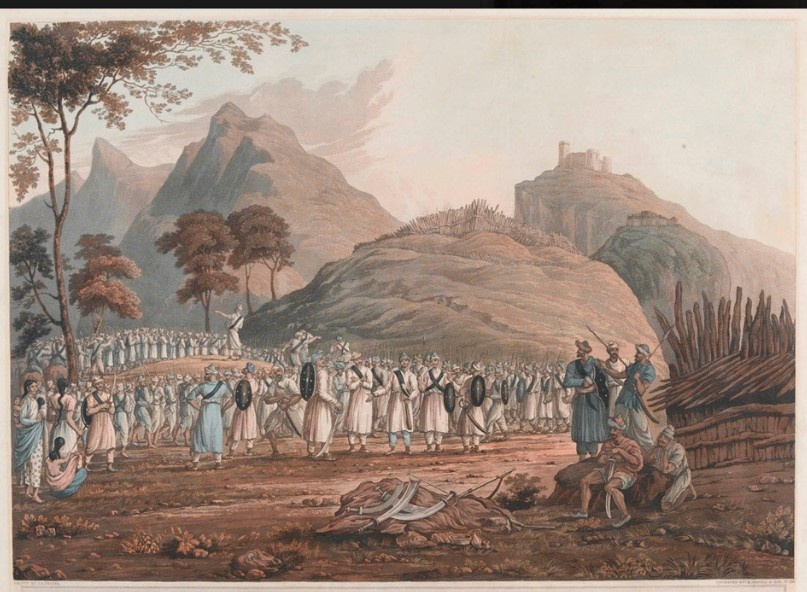
Fig 2- James Ballie Fraser travelled through Nepal in 1820 and this painting shows him interacting with locals. He wrote this about Gorkhas- after his trip –
‘Their soldiers are stout, thick, well built men, in general; very active and strong for their size. They understand the use of the ‘tulwar, or sabre, and prefer close fighting, giving an onset with a loud shout: each man wears, besides his sword, a crooked, long. heavy knife, called ‘cookree, [kukri] which may be used in war, but is also of the greatest use in all common operations, when a knife or a hatchet is needed.’
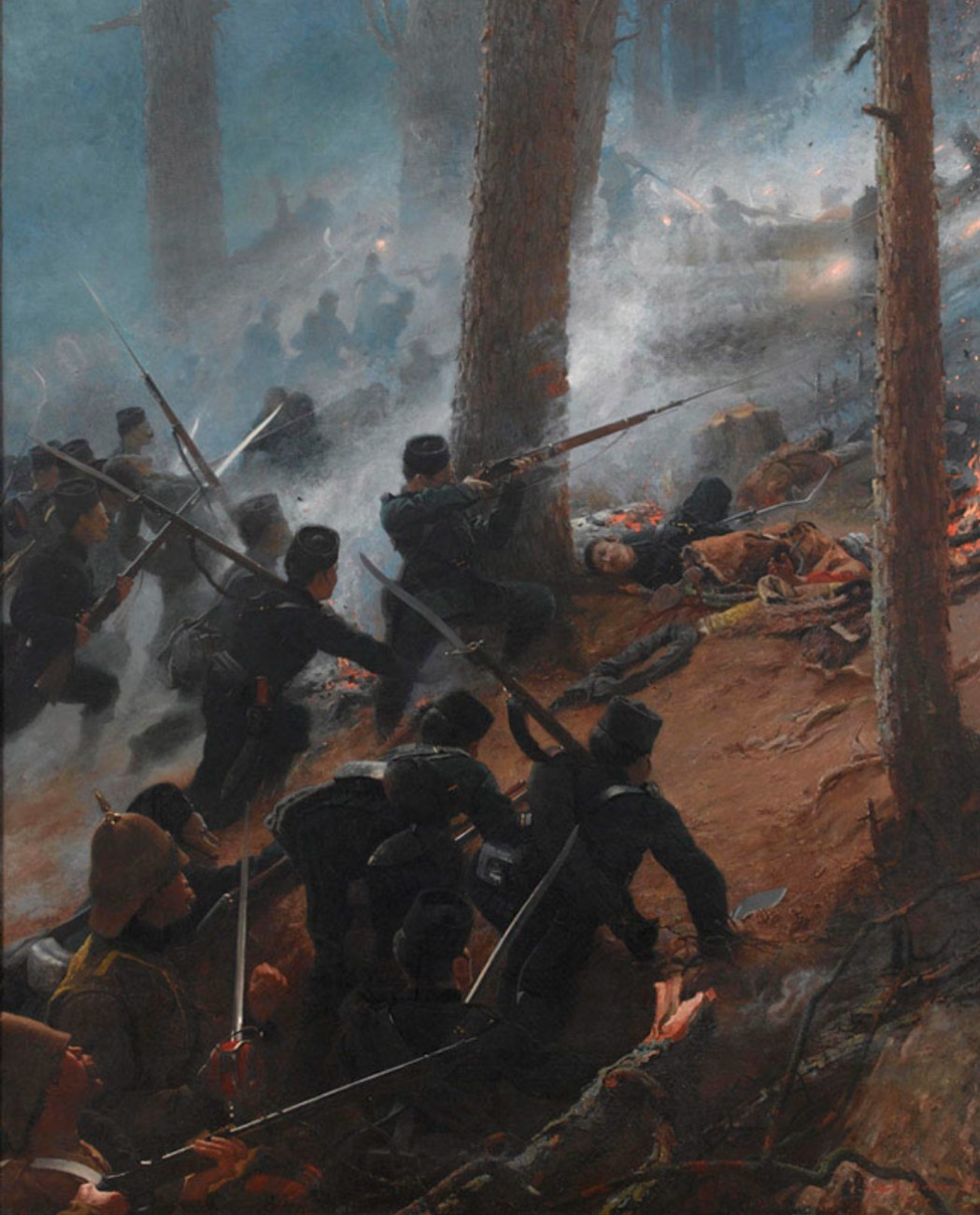
Fig 3- The attack on Afghanistan by 5th Gorkha Rifle in 1878
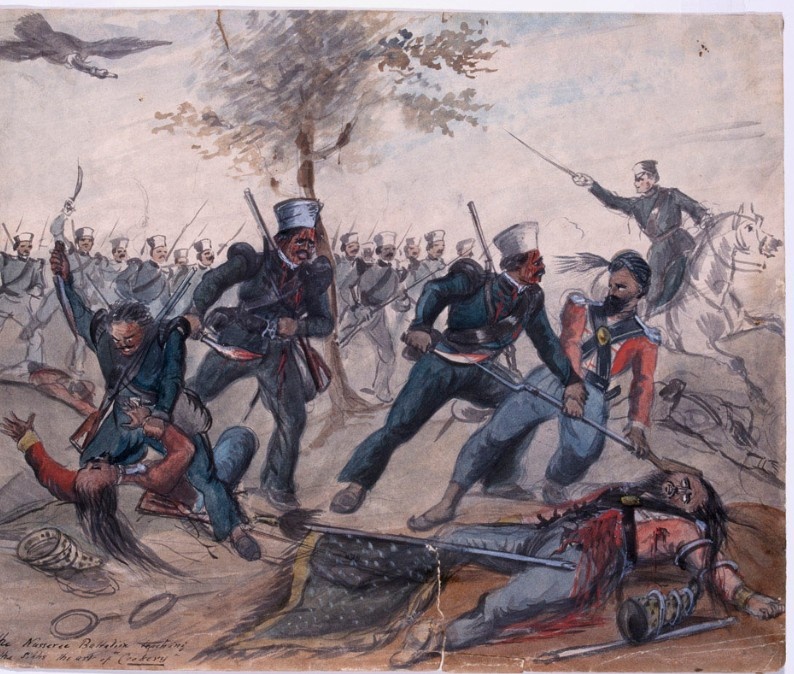
Fig 4- Nusree Battalion in the First Anglo-Sikh war, 1845
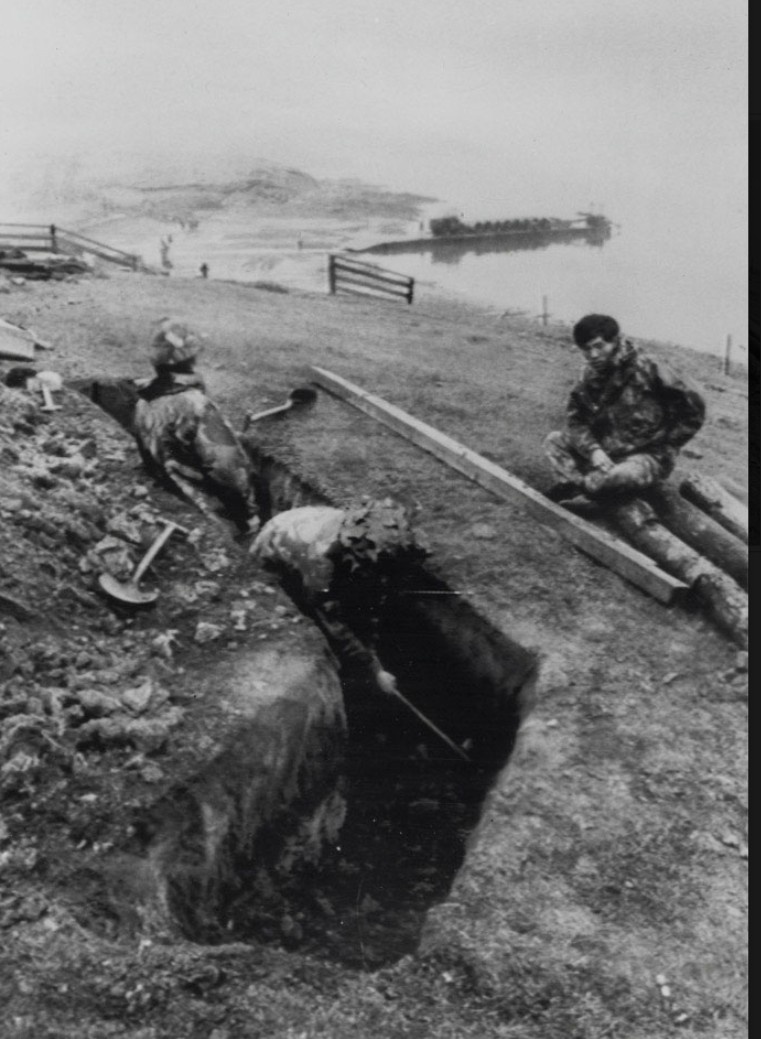
Fig 5- 2nd Gorkha Rifle during Falkland war in 1982
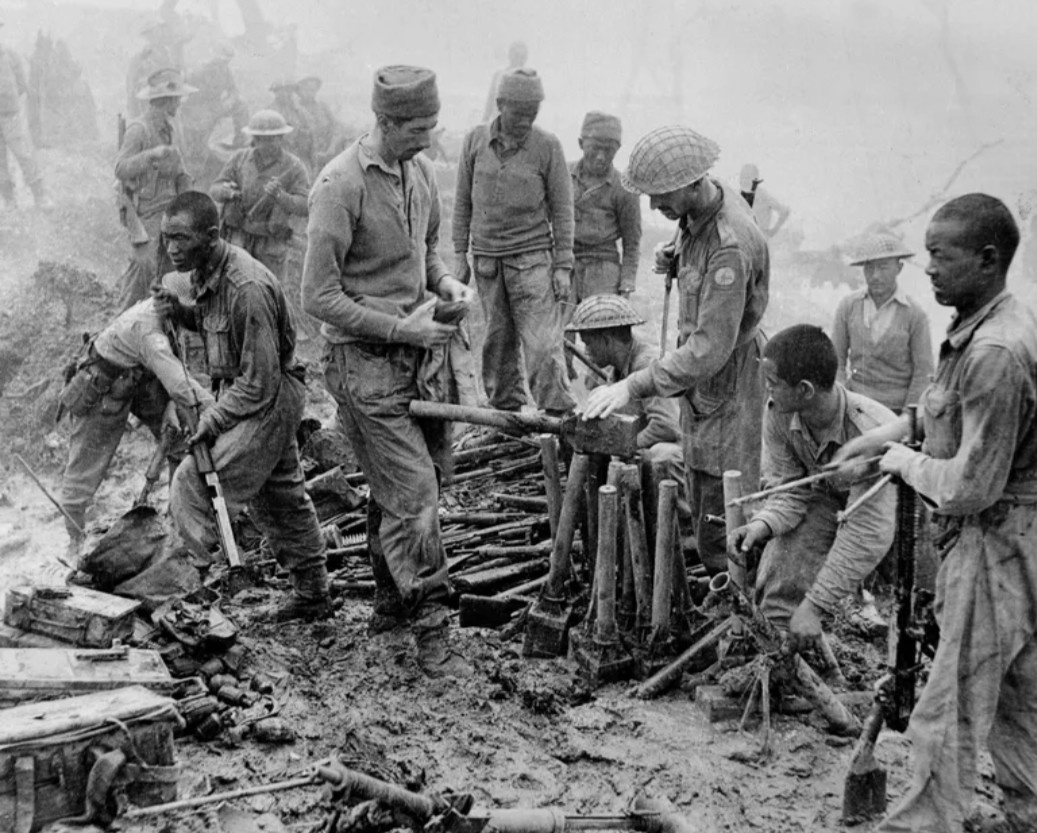
Fig 6- Gorkhas- in Second World War




